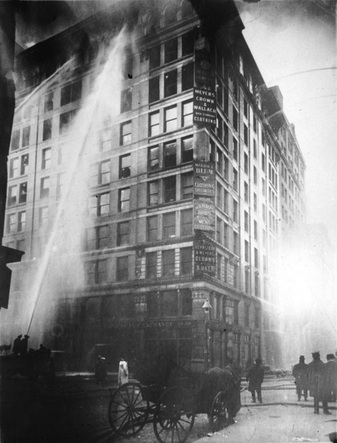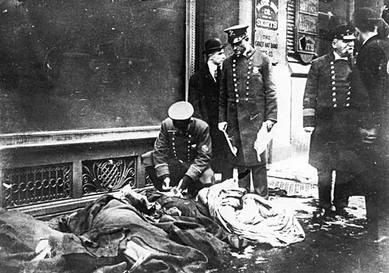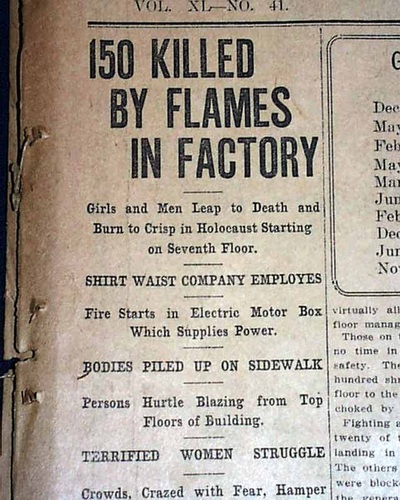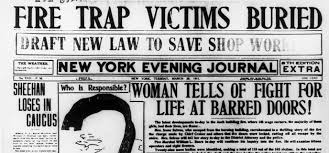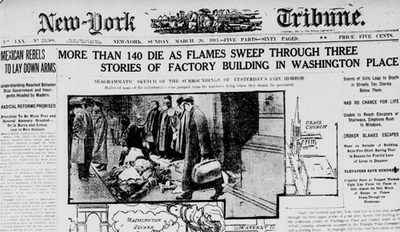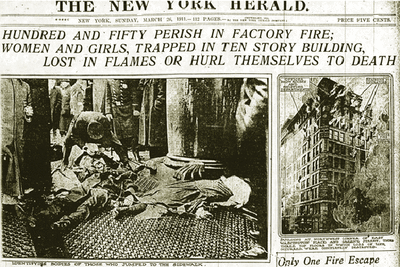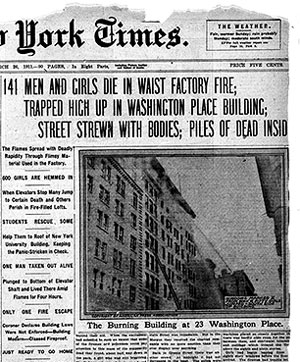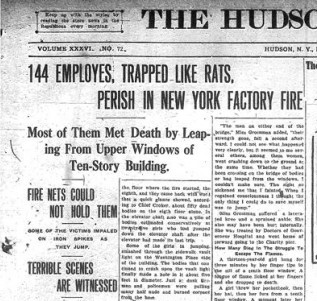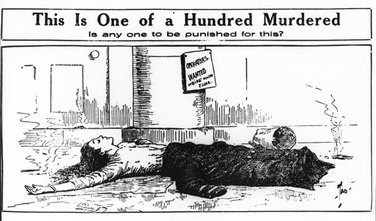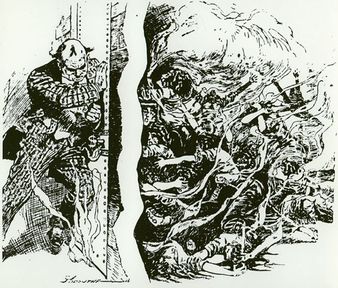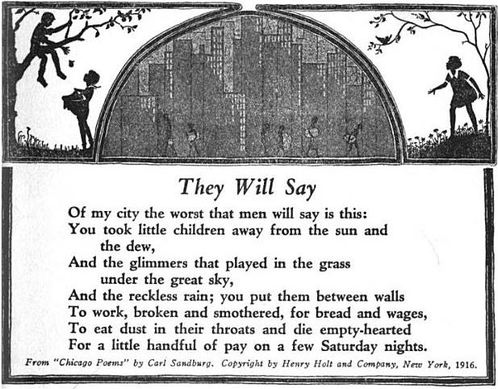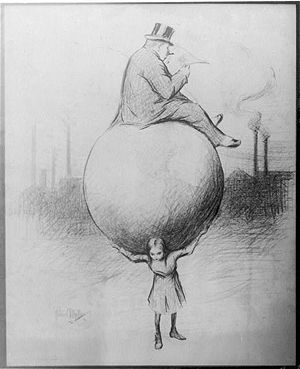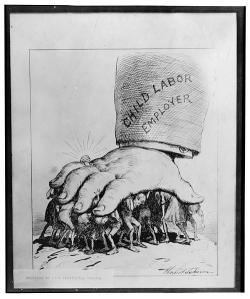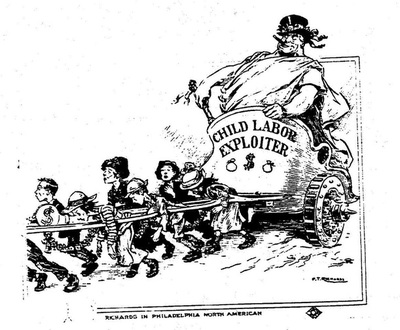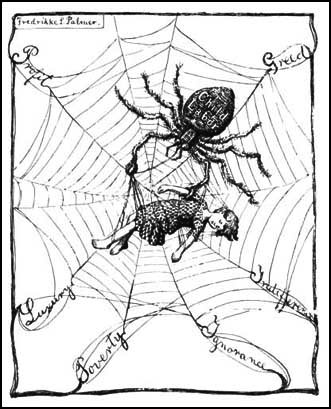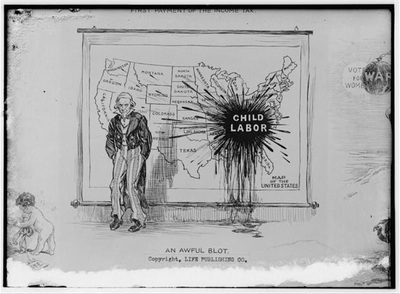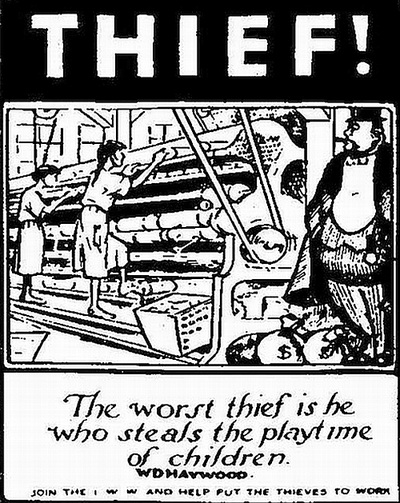Changes To Sentiment
Response to the Triangle Shirtwaist Factory Fire
"Near closing time on Saturday afternoon, March 25, 1911, a fire broke out on the top floors of the Asch Building in the Triangle Waist Company. Within minutes, the quiet spring afternoon erupted into madness, a terrifying moment in time, disrupting forever the lives of young workers. By the time the fire was over, 146 of the 500 employees had died"
-Cornell University School of Industrial and Labor Relations [2011]
The media reaction to the fire reflected a drastic change in public sentiment regarding working conditions for young laborers.
"Down came the bodies in a shower, burning, smoking, flaming bodies...the floods of water from firemen's hoses that ran into the gutter were actually red with blood" -William Gunn Shepherd, eyewitness reporter for the United Press [1911]
Newspaper headlines and political cartoons published the day following the fire revealed the outrage of the public.
"This incident has had great significance to this day because it highlights the inhumane working conditions to which industrial workers can be subjected. To many, its horrors epitomize the extremes of industrialism"
-Cornell University School of Industrial and Labor Relations [2011]
|
click to enlarge and view captions
|
|
"Across the nation, people read about the triangle fire. Other states changed their laws too. Numerous factory safety codes, building codes, and fire prevention laws with stiffer penalties were passed during the next few years. Upset about the young ages of many workers, people worked harder to change child labor laws" -Historian Victoria Sherrow [1995]
Popular Culture Addressing Child Labor
Cartoons, poems, songs, and articles dated after the formation of the NCLC illustrated a negative attitude towards child labor.
"Sandburg [author of poem] shows a special sensitivity to the plight of little children who are abused by the factory system" -Northern Illinois University Historical Society [2006] If not for the leadership and initiative of the NCLC, the author of this poem may not have even been aware of the cruelties of child labor.
|
click to enlarge and view captions
The children all grew up unlearned, they never went to school |
As a result of the NCLC's leadership and their commitment to exposing child labor, society no longer tolerated such blatant abuse of children, and this changed sentiment is reflected in it's media and popular culture.
|
Thesis:
The leadership of the National Child Labor Committee piloted the social reform movement against the exploitation of children. By harnessing the power of propaganda to influence public opinion, the NCLC changed society’s perception, thus allowing for the passage of national legislation prohibiting the labor of children. The legacy of the NCLC lies not only in ending child labor, but also in establishing a precedent for future federal regulation of labor. |
Niharika Boinpally and Divya Pakianathan
Senior Group Website Word Count (Student Composed): 1166 Process Paper Word Count: 484 |
